CBRNE suits present challenges, unfamiliar look during VR10.1
By Sgt. Joshua Ford, U.S. Army North PAO
BUTLERVILLE, Ind. - It is a sight that would remind you of a scene from the movie 'Outbreak,' or maybe something you would see in a science fiction flick, when service members with the Chemical, Biological, Radiological, Nuclear, and high-yield Explosive Enhanced Response Force Package get ready for a training exercise.
Dozens of Soldiers and Airmen lined up to enter a simulated radiological- contaminated area Nov. 7 at the Muscatatuck Urban Training Center, Ind., during the Vibrant Response 10.1 field training exercise.
More than 4,000 service members and civilians from throughout U.S. Army North, U.S. Northern Command, the Nation Guard and various other federal and state agencies, came together to train on responding to a domestic catastrophic incident.
U.S. Army North plays a huge role in the exercise. As the Joint Force Land Component Command and Army Service Component Command to U.S. Northern Command, ARNORTH ensures that the Department of Defense response to a disaster in the U.S. is timely and effective in helping the American people in a time of need.
Each service member from the search and extraction team, comprised of multiple National Guard and Air National Guard units from Ohio, toted a red bag containing equipment they would require to keep them safe from nuclear fallout.
If you see the Soldiers or Airmen suited up in their protective gear for such a mission, you might not think they were in the military.
Walking around in bright orange booties, protective masks, helmets and a full-body, fluorescent-yellow hooded jumpsuit, the service members look more like spacemen or extraterrestrials here to take over the planet.
That, of course, is not the case.
"We call them banana suits, big bird suits; I guess you could call them school bus suits too," said Sgt. Robert Kibler, CBRNE noncommissioned officer, 637th Chemical Company out of Kettering, Ohio. "They keep us safe though."
The suits are called Tyvex suits, and they protect service members from dangers in highly contaminated areas. The suits are not all bright yellow. Some are brown and others have a camouflage pattern.
There are variations of the suit, depending on the degree of contamination; but for the most part, they are the same, said Kibler.
"There are level A, B, C and D suits," Kibler continued. "The main difference is the material and the thickness of the types of suits."
Covered from head to toe, the Tyvex suit limits the service members in many ways but is absolutely essential for their protection from radiological and biological contamination.
"It can get pretty hot in one of these suits," said Staff Sgt. John Miller, senior safety NCO, 637th Chem. Co. "People say to add about 15 degrees to whatever the temperature is outside to what you feel in the suit. I say add 20."
With the heat in the suits comes the sweat and the possibility of dehydration, so the service members have to hydrate constantly. Earlier versions of the suit lacked a water source so service members were without water for however long they had to wear them.
"That was my biggest concern before, but it has been corrected," said Miller. "Hoses were added to the suits to provide water."
On average, Soldiers, Sailors, Airmen and Marines are only supposed to stay in the suits for approximately 45 minutes, but the time they spend in the suits can also depend on the temperature outside.
"It is not bad. If I know I'm getting in one of these suits the day before, I hydrate and make my team hydrate. The day I do get in the suit, my team and I drink a full canteen before we get in," said Airman 1st Class Lauren Dortmund, aerospace medic attached to a search and extraction unit, 121st Air Refueling Wing, Air National Guard, Rickenbacker Air National Guard Base, Ohio.
Being in a search and extraction unit presents another challenge for the Tivex suits. Service members have to be able to fit into tight places at times, especially if they are trying to get people out of a collapsed building or structure, and tearing the suit could be catastrophic for the person wearing it.
"You can move pretty well in the suits, but you have to be careful not to get caught on anything when you are crawling through holes," said Pfc. Michael Cooper, combat engineer, 811th Engineer Company, a National Guard unit out of Tarlton, Ohio.
"When you are going into smaller holes to extract somebody, you have to worry about getting your suit or your equipment caught on debris," Cooper added. "If you rip your suit while in the contaminated area, you have to get extracted because you are contaminated."
Hopefully we never have to see the 'banana suit' in action because that would mean something bad has happened or could possibly happen. Although the suits may seem to be uncomfortable at times, the Tyvex suits didn't stop the Soldiers and Airmen from the Ohio National Guard and Air National Guard from executing their mission; it enabled them to.
"I like wandering around in crazy looking suits," said Kibler. "It is good to know we have stuff like this."
-30-
Getting Ready.
BUTLERVILLE, Ind. - Pfc. Michael Cooper (left), combat engineer, 811th Engineer Company, a National Guard unit out of Tarlton, Ohio, and Airman 1st Class Lauren Dortmund, aerospace medic, 121st Air Refueling Wing, Air National Guard, Rickenbacker Air National Guard Base, Ohio, don their Tivex suits before going on a reconnaissance mission Nov. 7 during Vibrant Response 10.1 field exercise at Muscatatuck Urban Training Center, Ind. The Vibrant Response 10.1 field training exercise put more than 4,000 service members and civilians from throughout U.S. Army North, U.S. Northern Command, the Nation Guard and various other federal and state agencies, came together to train on responding to a domestic catastrophic incident.
(U.S. Army photo by Sgt. Joshua Ford, U.S. Army North PAO)
Entering Contaminated Zone.
BUTLERVILLE, Ind. - Soldiers and Airmen from multiple units in the Ohio National Guard and Air National Guard form a search and extraction team to enter a simulated contaminated area Nov. 7 at Muscatatuck Urban Training Center, Ind., during Vibrant Response 10.1 field exercise. The Vibrant Response 10.1 field training exercise put more than 4,000 service members and civilians from throughout U.S. Army North, U.S. Northern Command, the Nation Guard and various other federal and state agencies, came together to train on responding to a domestic catastrophic incident.
(U.S. Army photo by Sgt. Joshua Ford, U.S. Army North PAO)
Into the rubble.
BUTLERVILLE, Ind. - Soldiers and Airmen from multiple units in the Ohio National Guard and Air National Guard form a search and extraction team and crawl through the rubble of a simulated five-story building collapse Nov. 7 during Vibrant Response 10.1 field exercise at Muscatatuck Urban Training Center, Ind. The Vibrant Response 10.1 field training exercise put more than 4,000 service members and civilians from throughout U.S. Army North, U.S. Northern Command, the Nation Guard and various other federal and state agencies, came together to train on responding to a domestic catastrophic incident.
(U.S. Army photo by Sgt. Joshua Ford, U.S. Army North PAO)
Preparation.
BUTLERVILLE, Ind. - Soldiers and Airmen from the Ohio National Guard and Air National Guard prepare to enter a simulated contaminated zone Nov. 7 during Vibrant Response 10.1 field exercise at Muscatatuck Urban Training Center, Ind. The Vibrant Response 10.1 field training exercise put more than 4,000 service members and civilians from throughout U.S. Army North, U.S. Northern Command, the Nation Guard and various other federal and state agencies, came together to train on responding to a domestic catastrophic incident.
(U.S. Army photo by Sgt. Joshua Ford, U.S. Army North PAO)
-30-
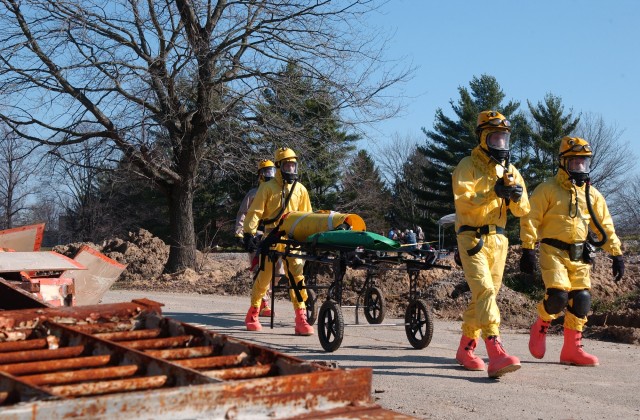
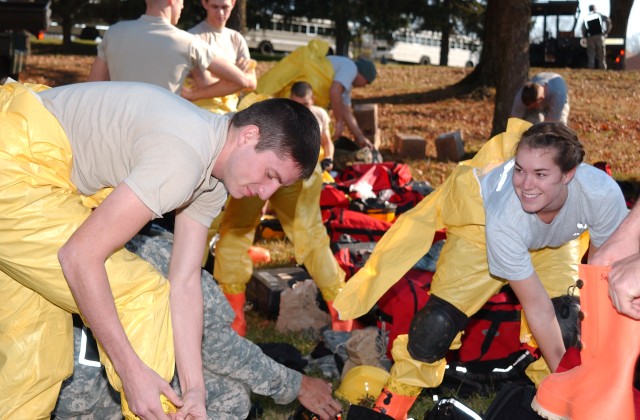
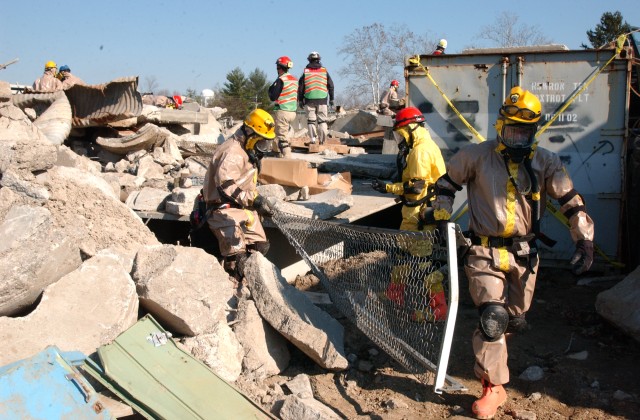
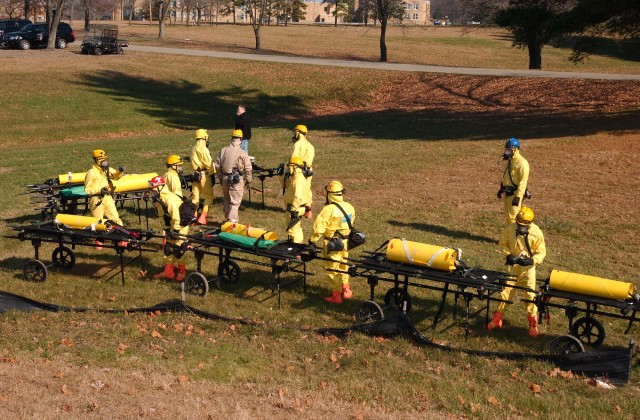
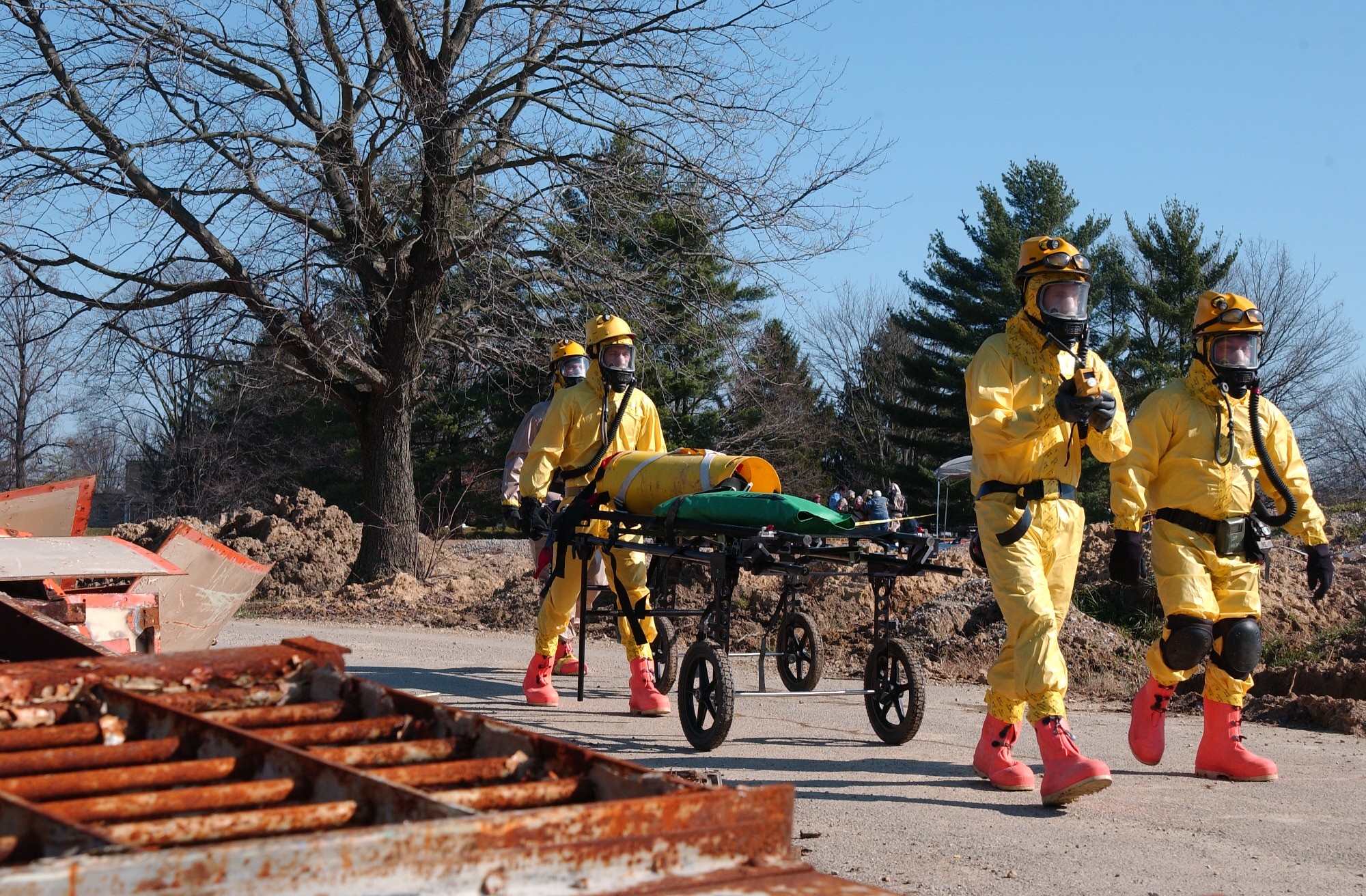

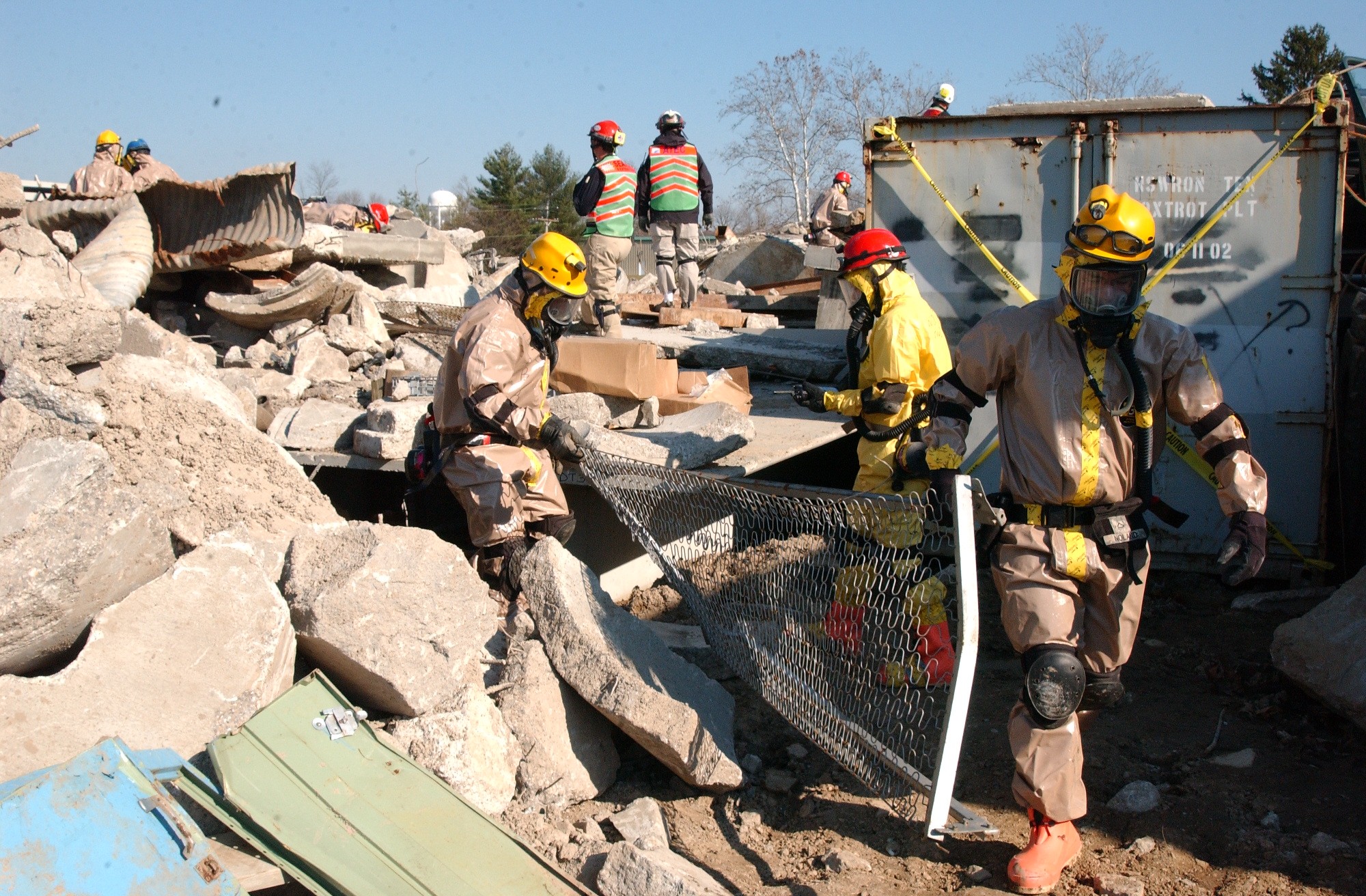
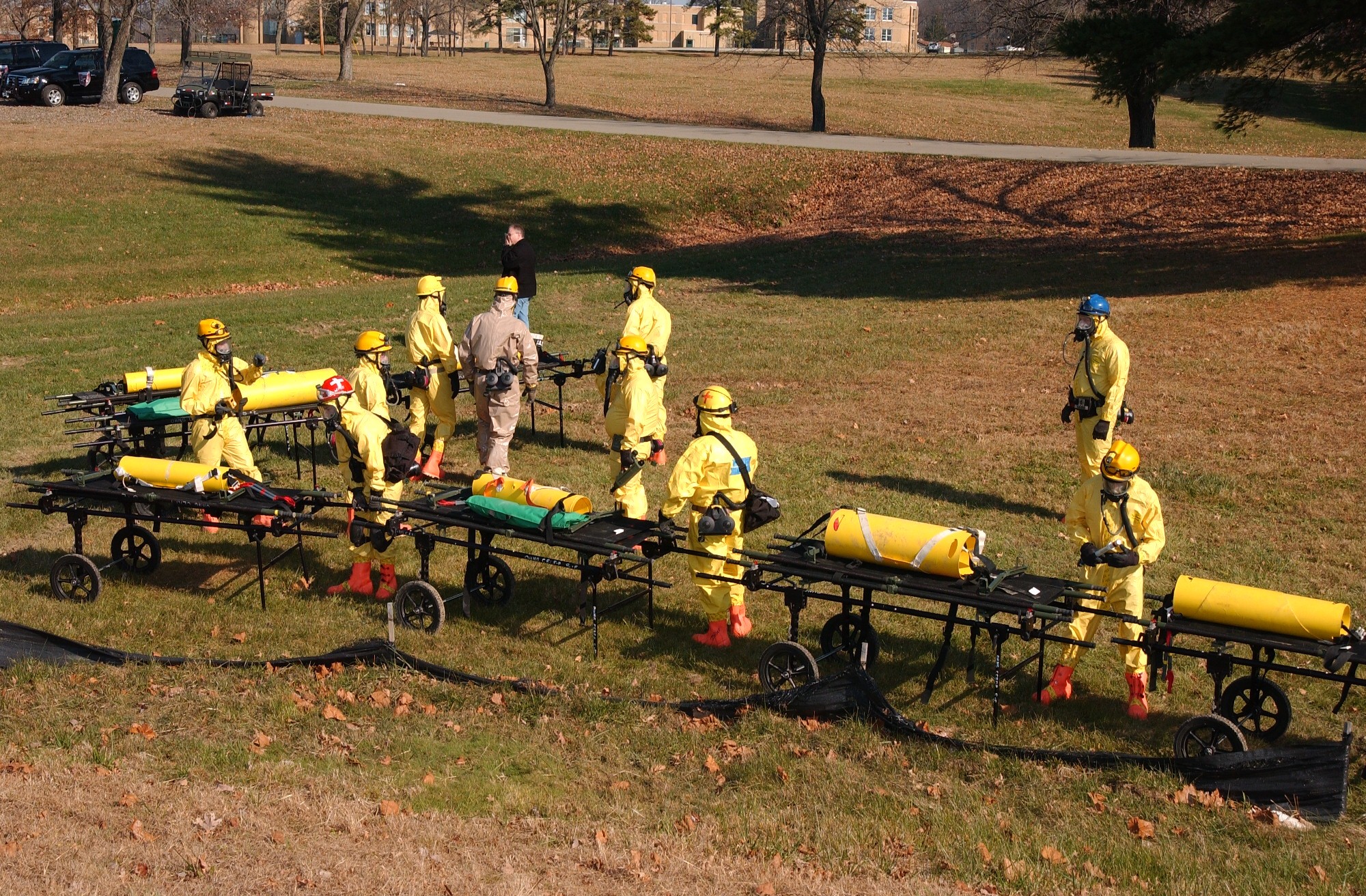
Social Sharing